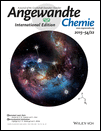Single-Walled Carbon Nanotube/Metalloporphyrin Composites for the Chemiresistive Detection of Amines and Meat Spoilage†
This work was supported by the National Science Foundation (DMR-1410718) and Graduate Research Fellowship under Grant No. 1122374 as well as the Army Research Office through the Institute for Soldier Nanotechnologies. We thank Dr. J. J. Walish for fabricating the PTFE device holder, Dr. J. M. Falkowski for assistance with electrochemistry, J. F. Fennell for Raman spectroscopic measurements, Dr. P. Müller for X-ray crystal structure refinement assistance, and J. M. Azzarelli for providing fish samples.
Graphical Abstract
Dead meat: Chemiresistive detectors for amines were created from single-walled carbon nanotubes by noncovalent modification with Co meso-arylporphyrins. The devices demonstrated sub-ppm sensitivity and high selectivity toward amines. The use of the detectors to monitor meat spoilage was also demonstrated. −ΔG/G0=change in conductance upon exposure to meat.
Abstract
Chemiresistive detectors for amine vapors were made from single-walled carbon nanotubes by noncovalent modification with cobalt meso-arylporphyrin complexes. We show that through changes in the oxidation state of the metal, the electron-withdrawing character of the porphyrinato ligand, and the counteranion, the magnitude of the chemiresistive response to ammonia could be improved. The devices exhibited sub-ppm sensitivity and high selectivity toward amines as well as good stability to air, moisture, and time. The application of these chemiresistors in the detection of various biogenic amines (i.e. putrescine, cadaverine) and in the monitoring of spoilage in raw meat and fish samples (chicken, pork, salmon, cod) over several days was also demonstrated.





